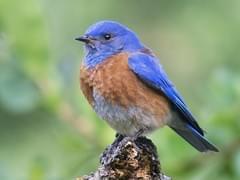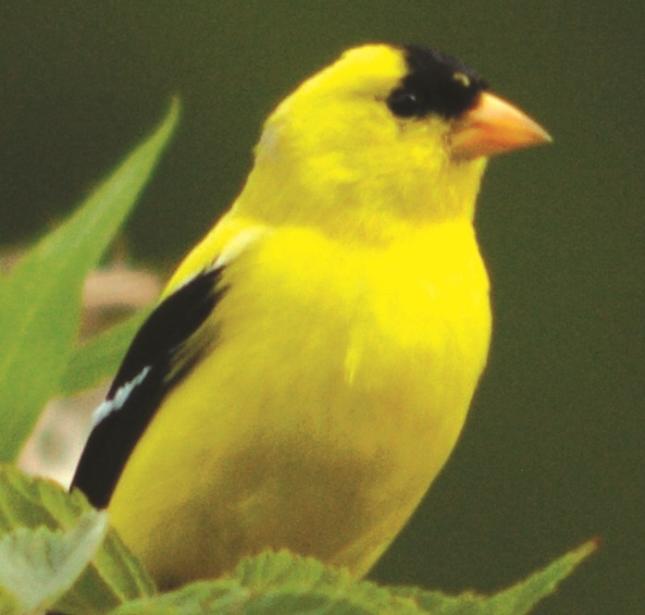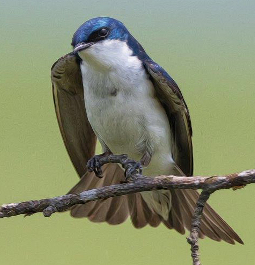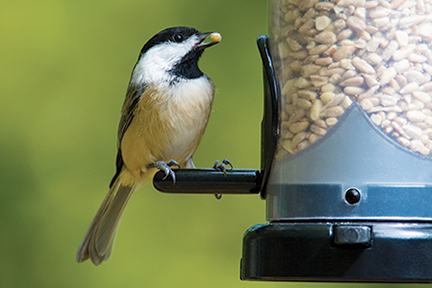February: Hello Bluebirds
 Feb. 14 to 17 are the dates for the annual Great Backyard Bird Count, when bird enthusiasts all over the globe unite for one great count before birds begin to migrate. To participate, all you have to do is count birds for at least 15 minutes on one of the four days and report your count using eBird, a free app for your phone. If you need help with bird IDs, also download and install the Merlin app by the Cornell Lab of Ornithology. If you can donate to both organizations, which our important for defending birds.
Feb. 14 to 17 are the dates for the annual Great Backyard Bird Count, when bird enthusiasts all over the globe unite for one great count before birds begin to migrate. To participate, all you have to do is count birds for at least 15 minutes on one of the four days and report your count using eBird, a free app for your phone. If you need help with bird IDs, also download and install the Merlin app by the Cornell Lab of Ornithology. If you can donate to both organizations, which our important for defending birds.
Left: A group sets out for a day of bird counting
There are other bird events this month, as February is National Bird Feeding Month. Of course, Project FeederWatch, the largest citizen-science event in birding, continues into April. It is not too late to join. The counts you make from now until April are important for the project.
 Beautiful Western Bluebirds show up in February, looking for suitable nest sites. They like wide lawns and big trees, but happily will come to your yard if you offer them live worms, their preferred food. Stop in at Wild Birds unlimited, as we freshen our worm supply every week.
Beautiful Western Bluebirds show up in February, looking for suitable nest sites. They like wide lawns and big trees, but happily will come to your yard if you offer them live worms, their preferred food. Stop in at Wild Birds unlimited, as we freshen our worm supply every week.
Right: A male Western Bluebird perches on a rock
If you have had suet feeders up to give birds more fat during the winter, they won't be neglected as we move into spring. There may be some new visitors, such as lively Ruby-crowned Kinglets and Northern Flickers. The kinglets soon will move north but need the extra nourishment for the journey. The flickers are around much of the year but often move away from highly urbanized areas to breed.

Left: A male American Goldfinch with bright plumage
If your goldfinches have looked dull, take heart. This month is when the American Goldfinches begin to molt into their brighter plumage. Of course, they need extra nourishment for the molt, so you may see even more at nyjer feeders. Also the Lesser Goldfinch, who have been less frequent at feeders of late, now seem to be returning in great numbers, as their natural foods have been burned away.
Loud but highly entertaining, Scrub Jays begin to nest later this month. They love peanuts in the shell, which they will store in hidden caches throughout the neighborhood. They like a fresh offering of peanuts in the morning and may remind you loudly, if you forget.
 Swallows arrive this month. Tree Swallows breed at Ballona Wetlands, using nesting boxes set up by Friends of Ballona Wetlands. Cliff Swallows have fewer good nesting areas in LA, but their mud nests can be found sheltered under freeway overpasses, if there is water nearby. The storied flocks returning to San Juan Capistrano are greatly reduced by urbanization.
Swallows arrive this month. Tree Swallows breed at Ballona Wetlands, using nesting boxes set up by Friends of Ballona Wetlands. Cliff Swallows have fewer good nesting areas in LA, but their mud nests can be found sheltered under freeway overpasses, if there is water nearby. The storied flocks returning to San Juan Capistrano are greatly reduced by urbanization.
Right: A tree swallow stretches a wing
For those who watch Bald Eagles Jackie and Shadow at Big Bear, February will be an exciting time. The pair have laid three eggs. which are due to hatch starting March 1. The two did not have good luck last year, but everything seems to be progressing well this year. The promise of three new members to this family, or any bald eagle family, is a gift.

